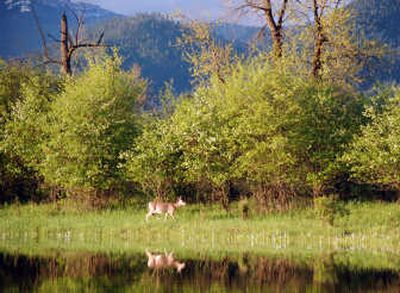Fawn crop hits the ground

The outdoors is a giant nursery this time of year.
Hunters know “the rut,” or peak of breeding activity for elk is in mid-September and then around Thanksgiving for white-tailed deer. This is when love-sick bulls and bucks temporarily lose some of their characteristic wariness in order to get the job done.
That translates into this week being roughly the peak of the spring fawning and calving season for deer and elk in the Inland Northwest.
Nature tends to program breeding and birthing into tight periods so newborns arrive just as the land is providing enough groceries to feed the family while still allowing time to for the new crop to grow strong and layer on some fat before the onslaught of winter.
The Arctic National Wildlife Refuge in Alaska is a classic example of wildlife geared to the narrowest margins of survival. For example:
“Arctic terns fly 21,000 miles round-trip from Antarctica to the refuge to raise their young in the bounty of protein from insects that boom in the 24-hour daylight.
“More than 100,000 caribou migrate hundreds of miles in a precise period to drop their calves on a section of the coastal plain that resembles a postage stamp on the map of their annual range. Here the snow and wind gives them temporary relief from mosquitoes and flies on a flat tundra where they are less susceptible to wolves and grizzlies.
Virtually the entire crop of up to 45,000 calves will be born within in a week around early June.
So don’t be surprised to run across some young ones on your outings in the next few weeks. Remember, as Paul McCartney almost wrote, “speaking words of wisdom, leave them be.”
Mother animals often leave their young as they forage. If they return to their young to find people milling around, they will often leave the area and come back when the people are gone. If people have taken the baby animal, the mother will return to find their baby gone.
The phones at state wildlife agencies already are ringing with callers wanting to bring in baby wildlife they’ve found in the wild.
“Even though their intentions are good, it isn’t the best thing for the animals,” said Regan Berkley, Idaho Fish and Game Department wildlife biologist.